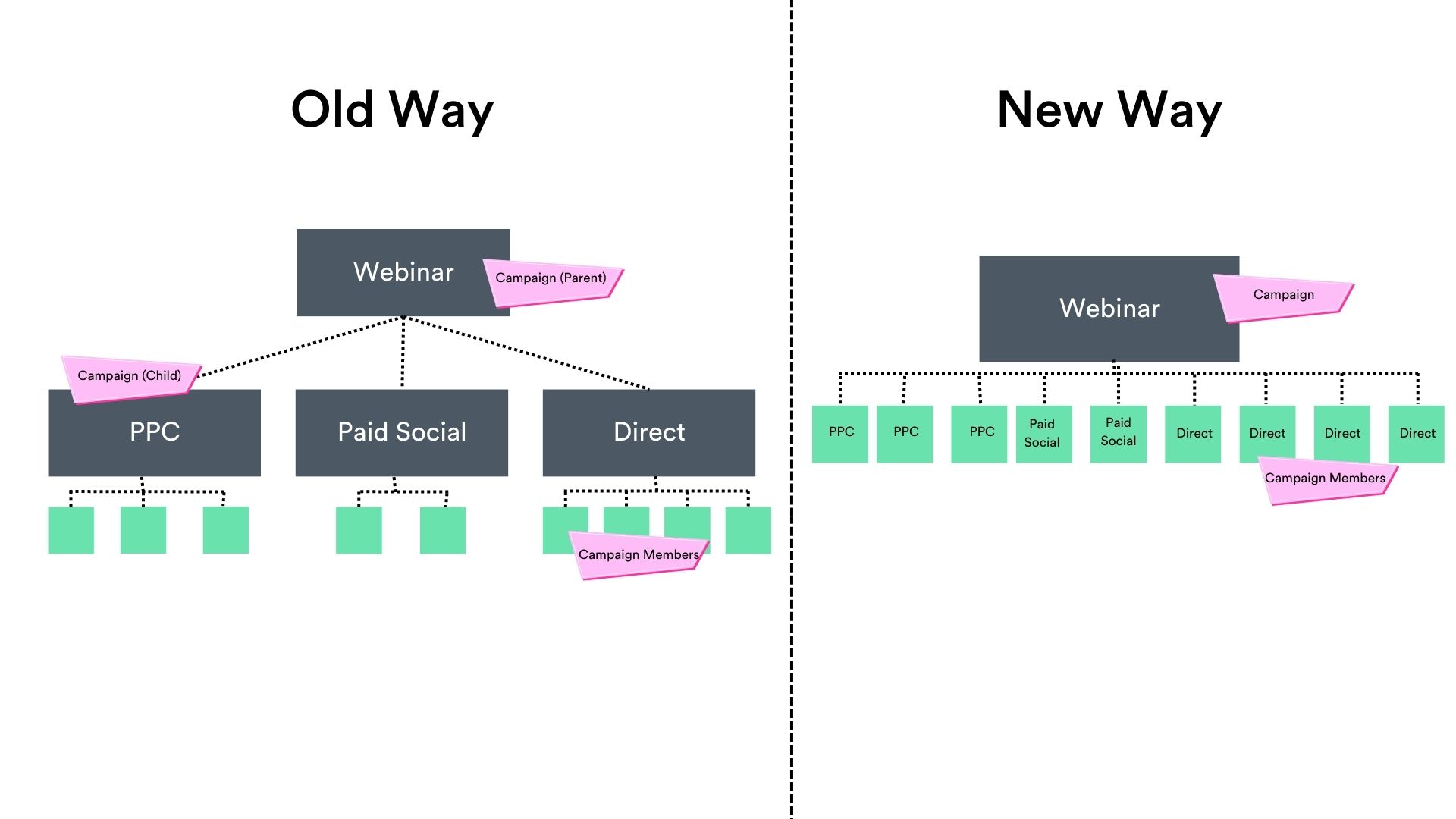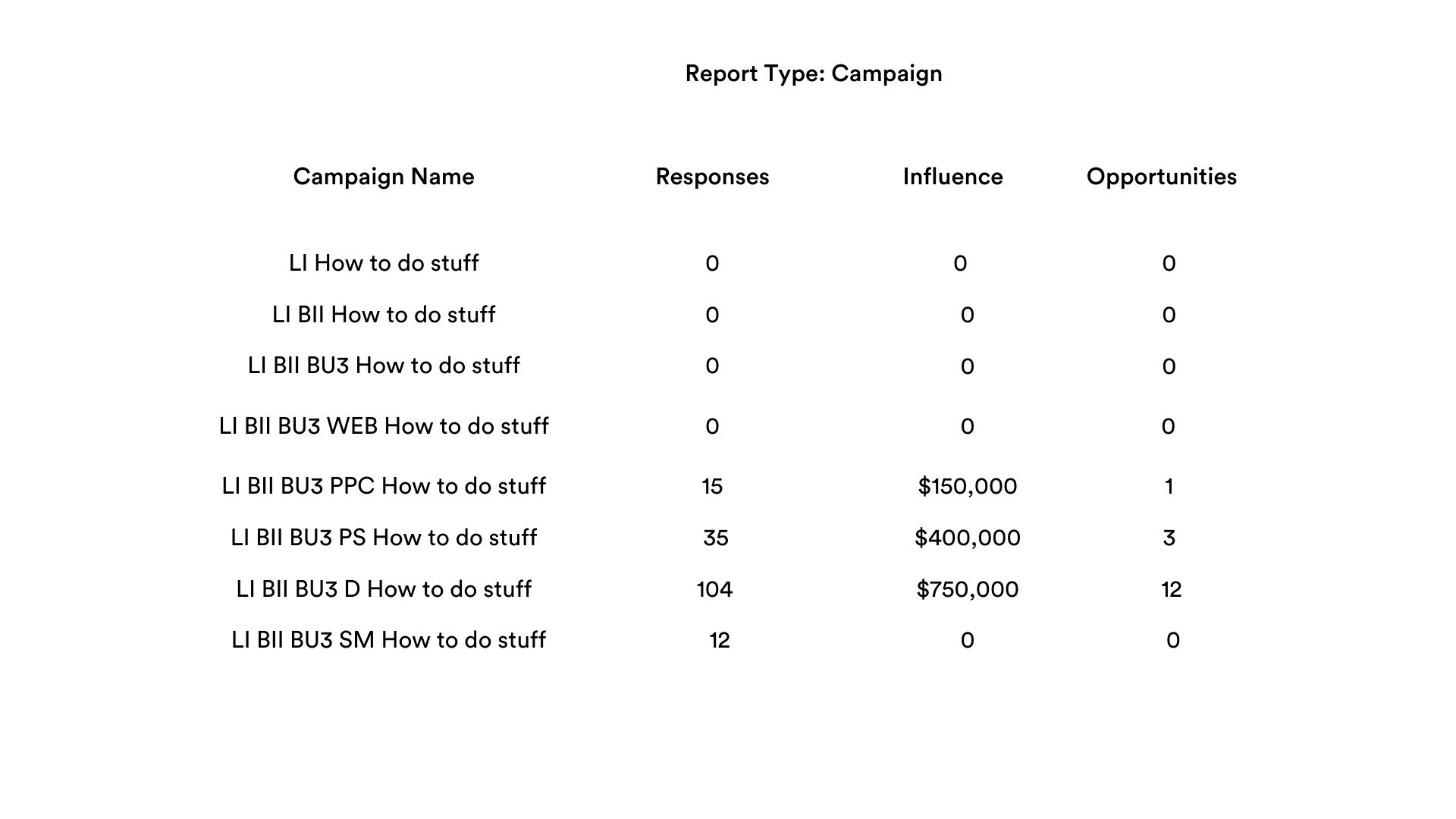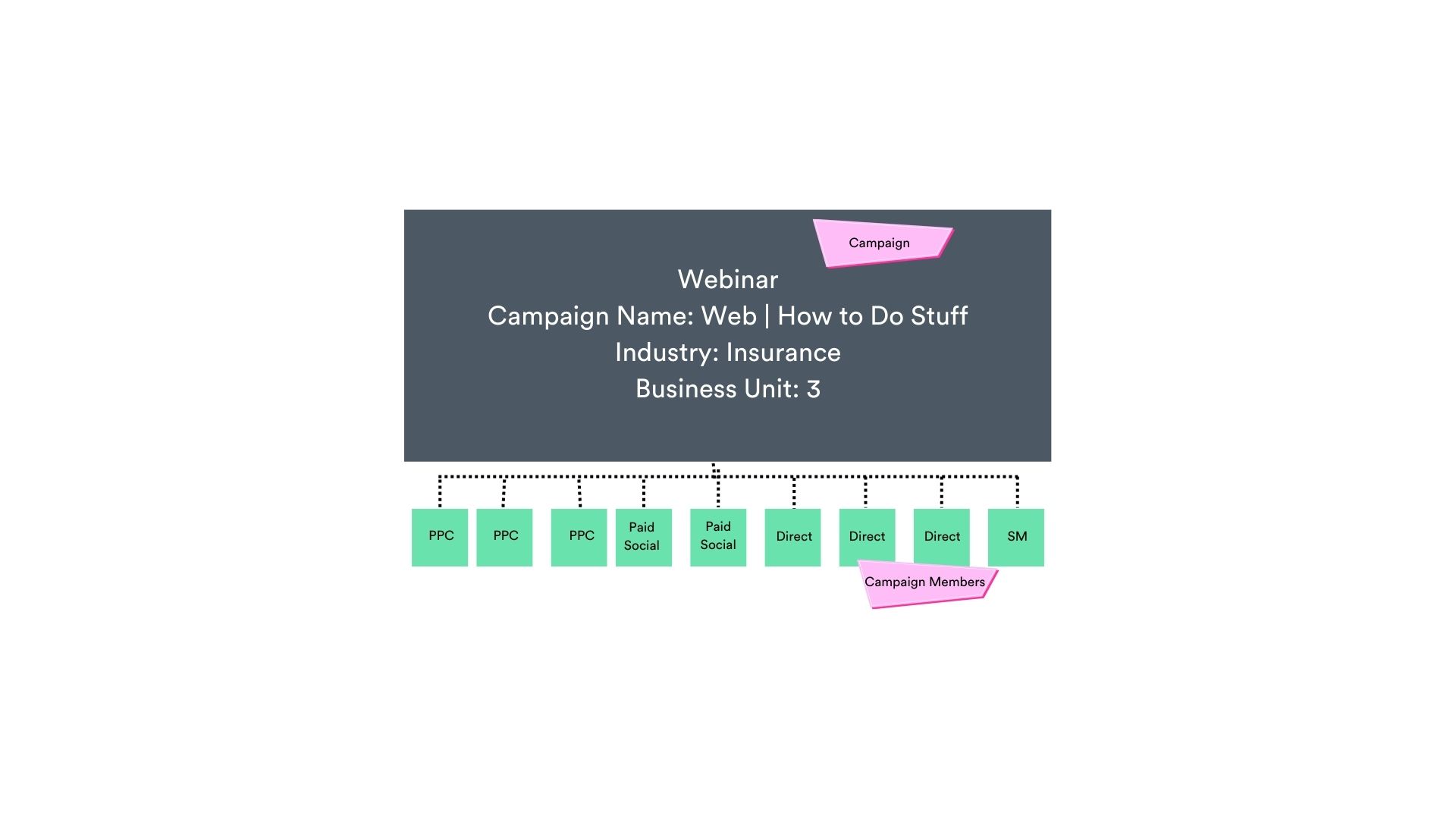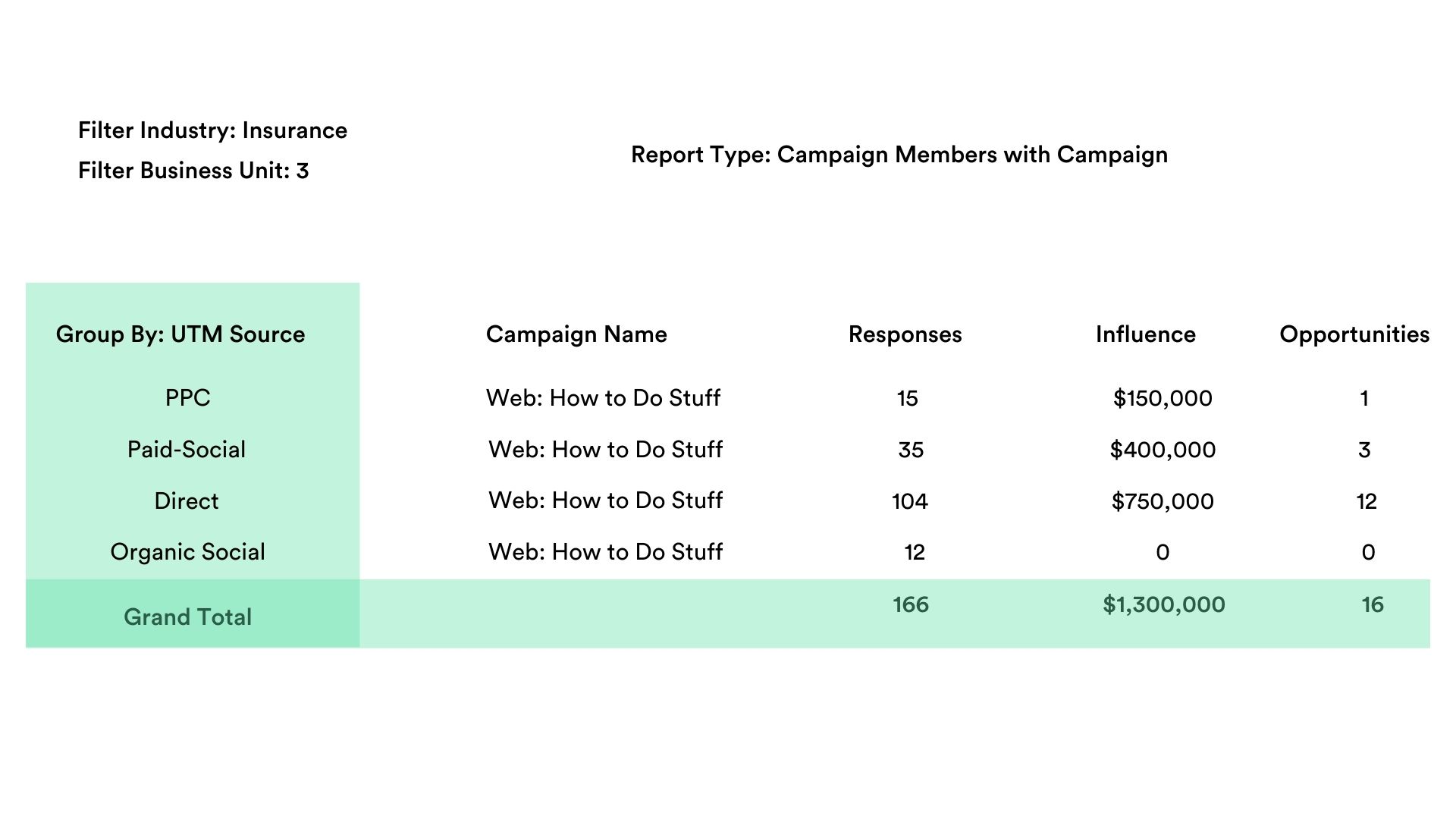System Overview
Getting Started
New to CaliberMind - Start Here!
How do I use CaliberMind's search functionality?
Company or Account Detail - Search Results
Campaign Detail - Search Results
Person Detail - Search Results
Opportunity Detail - Search Results
How Does CaliberMind Define a "Channel"?
What Is a CaliberMind Event or Event Table?
How to use Dashboards
CaliberMind Home Page - Updated
Quick Link Bookmarks
Connectors / Integrations
CaliberMind Connectors - Start Here!
Adding Your First Connector
CaliberMind Connectors
How to Connect: Act-On
How To Connect: AdRoll / RollWorks
How to Connect: G2, Bombora, or 6sense
How to Connect: Google Ads [via FiveTran]
How To Connect: Google Analytics
How to Connect: Google Sheets
How To Connect: HubSpot
How to Connect: Klaviyo [via FiveTran]
How To Connect: LinkedIn Ads
How To Connect: Marketo
How To Connect: Microsoft Dynamics
How To Connect: Outreach
How to Connect: Pardot [via FiveTran]
How to Connect: Salesforce [via FiveTran]
How to Connect: Segment [via FiveTran]
How to Connect: Twitter [via FiveTran]
How to Connect: ZoomInfo / DiscoverOrg
How To Connect: Google Campaign Manager 360
Kickfire
Setting Up the LinkedIn Push Connector
Setting Up the Salesforce Push Connector
How to Connect: Slack
Power BI/ Tableau/ Looker Connectors Article
Connecting Your Data Warehouse to CaliberMind - Start Here!
Connecting Tableau to CaliberMind
CaliberMind Data Export to Google Cloud Storage
Ingesting CaliberMind Data Into Snowflake
Pushing CaliberMind Person Engagement Data to Salesforce
Integrations Appendix by Connector
SFTP Connector - Updated 2021
Replicating CaliberMind Attribution Data to Salesforce
How to Connect Facebook Ads
How To Connect: Google Search Ads 360
KickFire De-Anonymization in CaliberMind
Field History SFDC Limits (Salesforce)
SFTP Synced Files - Making a Data Change
Connections - Email Notifications
CaliberMind Data Access FAQs
Microsoft Bing Connector [via FiveTran]
Connector Health and Web Tracker Health reports
Connectors Status Page
In-App Notifications
CaliberMind IP Addresses for Whitelisting
Developer Guide
Developer Guide - Start Here!
CaliberMind Entity Relations and System Tables
What is Google BigQuery
CaliberMind Common Data Sources
CaliberMind Identity Levels
System Configuration
Configuring Funnels
How to Set Up and Configure Funnels
Funnel Stages Configuration and Stage Definitions
Funnels FAQs Technical Documentation
Funnel Company Inclusion Configuration
Event Explore for Funnels
Funnel History Event Configuration
Funnel Static Event Configuration
Funnel Person Inclusion Configuration
Funnel Person Status Exits
Object Manager: Campaign Member
How to See Your Object Manager History and Revert Back to Previous Versions
Setting Your Saved Filters for In-App Reporting
Setting Up UTM Mapping in CaliberMind
UTM Parameters Formatting and Best Practices
Standard Channel Logic
Channel Ranking Logic
Custom SQL Data Transformations
Add BigQuery Users within CaliberMind
Remove a BigQuery User within CaliberMind
Adding Custom Columns in Salesforce
How to Email CaliberMind Reports
Setting Up Account Trend Emails
How does CaliberMind normalize the raw data for use?
List Builder
List Builder - Start Here!
What are Lists?
Creating a List Using the List Builder - Step-by-Step Instructions
Use Case Videos - Creating a List Using the List Builder
Importing a List
Downloading a List - Step-by-Step Instructions
Account List Upload - File Requirements
People List Upload - File Requirements
Campaign List Upload - File Requirements
Creating an Account List From a Campaign
Creating Company Lists in List Builder
Creating Company Lists using SQL
How to create a list of all Opportunities that have a very low Engagement
Where is my Segments Menu?
Keyboard Shortcuts using SQL
Web Tracker Installation & Settings
Web Tracker and Installation Settings - Start Here!
Installing AnalyticsJS (CaliberMind snippet)
Two ways to identify prospects that submit a form containing email address using AnalyticsJS
Install AnalyticsJS on a HubSpot website
Using AnalyticsJS Identify on embedded Hubspot forms
Using AnalyticsJS Identify on embedded Marketo forms
Types of Analytics.js Calls
Analytics.JS Overview
Using Analytics.js to Track Web and Product Events
How Cookie Settings Affect the Analytics.JS Tracking Script
Google Tag Manager (GTM) Ad Blockers
Using AnalyticsJS with Drift
Using AnalyticsJS with Qualified
How to check your AnalyticsJS implementation
Identify users using Intercom Messenger
Flows
CaliberMind's Most Popular Flows | Automations
How to use QuickFlows
Flows Status Page
Merge records in Salesforce CRM
Add a Quick-Flow to Salesforce Campaign
Using ClearBit Flows
Setting Up Workflow - Lead Deduplication
ZoomInfo - Add-to/Enrich your database
Setting Up Workflow - Website Repair
Setting Up Workflow - Account Deduplication
Creating Sales Campaigns from Salesloft and Outreach Activities
Setting Up Workflow - Contact Deduplication
Campaigns
Campaigns - Start Here!
Custom Programs for Campaigns
Campaign-Program Membership
Custom Campaigns
Program Logic for Campaigns
Setting Up Answers
Setting Up Answers - Start Here!
Using CaliberMind Answers to Understand Campaign Performance
Using CaliberMind Answers to Understand Account Engagement
Using CaliberMind Answers to Understand Funnel Performance
Using CaliberMind Answers to Understand Funnel Impact
Using CaliberMind Answers to Understand Funnel Flow
Ask Cal Custom AI Answer
Ask Cal Custom Answers: Use Cases
User Administration & SSO
Administration and SSO - Start Here!
Single Sign On (SSO) Setup
Manage Users - Viewing, Inviting, Updating Users and Roles
User Authentication and Provisioning
CaliberMind Data Warehouse Access in Google BigQuery
CaliberMind Insights Dashboards
Working in Insights
CaliberMind Insights - Browser Requirements
CaliberMind Insights - Sharing Dashboards & User Permissions
CaliberMind Insights - Navigating to Insights/Dashboard
CaliberMind Insights - Using Dashboards
CaliberMind Insights - Dashboard Refresh Schedule
CaliberMind Insights - Application Concepts and Terminology
CaliberMind Insights - Filters & Aggregation Type
Building Dashboards - Insights
Attribution Dashboards - Insights
Insights - Attribution - Start Here!
Insights - Attribution Terminology and Key Concepts
Insights - Attribution Overview Dashboard 2.0
Engagement Dashboards - Insights
Insights - Engagement - Start Here!
Insights - Engagement - Dashboard Terminology & Key Concepts
Insights - Engagement Overview
Insights - Engagement - System Account Detail
Insights - Engagement - Person Detail
Build Insights Dashboards - Start Here!
Creating a Custom Pipeline Dashboard (VIDEO)
CaliberMind Insights - Creating Custom Dashboards
Build Your Own Insights Pipeline Dashboard
Building Formulas with Functions
Insights - ROAS Dashboard Use Cases
Creating and Editing a Widget Formula
Using Conditional Statements
How is CaliberMind ROAS Reporting Different than Insights ROI?
Insights - ROI - Start Here!
How to Create a Filter Bookmark
Create Date Range Filters - Step-by-Step
Creating Formulas Based on Criteria and Conditions (Filters)
Insights Data Connector Health Dashboard
Dashboard Function Reference
Introduction to Formulas - Start Here!
Insights Web Tracker Health Dashboard
Using Quick Functions
Insights - ROAS Terminology & Key Concepts
Insights Engagement Dashboard - Aggregation Dates
Filters
Object Mapping for Filters - Start Here!
Custom Configuration for Object Mapping
Object Mapping Filters
How to Map Your Salesforce Opportunity Revenue Field
Object Mapping: Create a Filter
Object Mapping: Create a Mapping
Object Mapping: Create a Replacement
Object Mapping: Create a Campaign Substitution
Filters Update for Creating Filter Sets
Filter Drawer Definitions
CaliberMind Sandbox
GDPR Compliance with CaliberMind
Data Dictionary
Attribution
Analytics
Attribution
Attribution Overview: Summary Tab
Attribution Overview: Comparisons Tab
Attribution Overview: Explore Tab
Attribution Overview: Opps Tab
Attribution Overview: People Tab
Attribution Overview: Events Tab
Campaign Types: Best Practices for Easy-to-Read Attribution
Virtual Campaigns in CaliberMind
Attribution - CaliberMind versus Embedded Attribution in Salesforce?
Removal effect with a Markov chain model
Attribution Reports Summary
Demand Generation
Data Integrity
Customer Success
Understanding Reports
CaliberMind Analytics Concepts
Overview of Analytics and Attribution
Filters and Hyperlinks
Using the Engagement Trending Report
Analytics Reporting: Salesforce Custom Column Filter Support
Using Tags to Organize Your Lists
Attribution Overview - Campaign Performance Table
Using Campaign Lists in Dashboards
Using Company Lists in Dashboards
CaliberMind Metrics Definition
Product Attribution Dashboard
Self-Hosting CaliberMind AnalyticsJS
ROI
Revolutionizing Marketing ROI: CaliberMind's Innovative New Approach
Return On Ad Spend Dashboards
Revenue Contribution Reports Summary
Channel ROI Overview
Creating and maintaining a custom advertising budget for ROAS
Best Practices for Tracking Return-on-Ad-Spend (ROAS)
Why Is CaliberMind ROAS or ROI Different Than My Ad Platform?
Campaign ROI Overview
Budget for ROI Channel Reporting
Attribution Models
Choosing the Right Attribution Model
Attribution Models: First-Touch
Attribution Models: W-Shaped
Attribution Models: Middle
Chain-Based Attribution Model
The A-Shaped Model
Configurable Widgets
Ad Performance Report - Summary Tab
Ad Performance Report - Attribution Tab
Funnels
Funnels 101
Funnels - Start Here!
Marketing & Sales Funnel Foundations
What is a Marketing Funnel?
Sales Funnel Journey: Questions and Answers
Common Funnel Issues
Sales Funnel Glossary
Funnel Stage Definitions
Funnel Terms and Concepts
Sales Funnel Metrics
What is the difference between an Active Journey and a Journey?
In-App Funnels
Funnel Overview: Summary Tab
Funnel Overview: Progression Tab
Funnel Overview: Cohort Tab
Funnel Overview: Stage Analyzer Tab
Funnel Overview: Comparison Tab
Funnel Overview: Journeys Tab
Insights Funnels
Funnels Use Cases
What channels move journeys through a given stage?
How can I see the number of journeys in or passing through a funnel stage during a period of time?
What touches are influencing each step in the funnel?
How do I see the first event (or "tipping point") in each stage of my funnel?
Where are my customers stuck in journeys?
How do I know the last event that happened before a journey stage change?
How do I identify stage conversion rates?
Funnel Configuration - Insights
Funnel Trigger Events Dashboard
Insights Funnels Reports Explained
Funnel Trend Dashboard
What is a Starter Funnel?
Funnel Cohort Analysis Dashboard
Funnel Cohort Analysis Use Cases
Funnel Data Explore Dashboard
Introducing CaliberMind's Funnels
Funnels - Lead, Contact, Account, Opportunity Statuses and Stages
Pressure Event Dashboard 101
Demand Generation Funnel Dashboard
Engagement and ABM
Engagement Scoring
Model Configuration
Customize Engagement Scoring Models - Start Here!
Engagement Scoring Models Overview
How to Change Event Touch Scores
How to Add or Change Engagement Score Multipliers
Add or Change Engagement Score Filters
Create Multiple Engagement Score Models
Which touches and events are we scoring?
Sales Opportunity Data Model
Engagement Scoring Time Decay - How It Works & How to Change It
Custom Attribution Configuration - Custom Weighting
Using Engagement Score to Trigger an Update in Salesforce
Default ABM Scoring Logic
Recommended Weights for Engagement Scores
Engagement Reporting
Engagement: Summary Tab
Engagement Overview: Companies Tab
Engagement Overview: People Tab
Engagement Overview: Campaigns Tab
Engagement Overview: Explore Tab
Company Engagement AI Summary
Account-Based Marketing Reports
Linking to CaliberMind Reports in Salesforce
ABM Best Practices
Account-to-Lead (A2L) Matching
Lead-to-Account Matching (L2A)
Pushing CaliberMind ABM Scoring Fields to Salesforce.com
Slack AI Company Engagement Summary
3rd Party Intent Signals with Bombora
Tutorials and Use Cases
Digital Marketing Terminology
Customizing Report Visibility (Show/Hide)
How to Manage Your Offsite Events Using CaliberMind
How can I manage my BDR/SDR team activities with CaliberMind?
Combining Engagement Score with Attribution
Enabling the Sales Teams to see the Entire Buyers Journey
How Can I Identify High Risk Opportunities?
How does Sales leverage CaliberMind? Some key use cases.
Running a Sales/Pipeline Review with CaliberMind
How Is CaliberMind Different From My CRM Attribution?
CRM Campaign Member Status and Campaign Response Best Practices
How Do I Optimize Advertising Spend?
Campaign Best Practices Across Systems
How do I use CaliberMind to shorten our sales cycle?
Answering Business Questions Using CaliberMind Reports
Which of my leads are the most engaged?
How Do I Know If a Campaign Is Good or Bad?
How to Flatten Your Campaign Structure in Salesforce
Table of Contents
- All Categories
- Tutorials and Use Cases
- Campaign Best Practices Across Systems
Campaign Best Practices Across Systems
How should I think about Campaigns?
The key to getting more out of your campaign data is answering the following questions:
- What do your executives want to report on?
- What does your team need to make better decisions?
Fortunately, what your team needs for their respective campaigns will be much more detailed than what the executive team is looking for, so that’s where we’ll focus.
The following article sections detail best practices for B2B campaign structure. Remember, there are multiple solutions to any problem; sometimes, what we suggest won’t make sense for your organization. We’ll try to make our examples specific so you can visualize whether our best practice recommendation suits your unique needs.
What Are Your CMO’s Goals?
For those of you in B2B who are trying to recreate your buyer’s digital journey in your CRM campaign object, we’d like to challenge your thinking with a single question:
What is THE question your CMO is trying to answer?
Nine times out of ten, they’re trying to prove the impact marketing has on your business compared to other departments.
You may be looking for the “golden buyer journey” or a way to force people down a sequence of events that ends in a sale. However, business leaders equate results with bookings and pipeline. Campaign creation records the most meaningful interactions.
If we focus on representing marketing’s contribution to pipeline and bookings, we’re no longer concerned with capturing every brand interaction. It’s in our best interest to narrow marketing’s campaign responses to only the most influential.
Your CRM doesn’t need to represent every brand touchpoint exhaustively. This perspective permits our marketing teams to stop trying to achieve the impossible–capturing every digital touchpoint.
Does this mean you’ll stop running digital ads or tying those ads back to impact on pipeline and bookings?
No! But it does mean you’ll probably achieve this differently than how you’re tracking and reporting campaign activity in your CRM.
Virtual Campaigns in CaliberMind
Before we dive into best practices for CRMs and marketing automation systems (MAS), we need to take a moment to talk about virtual campaigns.
Virtual campaigns in CaliberMind are what we use to populate the CM Event tables. The virtual campaign captures everything you usually wouldn’t clutter your CRM campaign with. Beyond actual campaigns in your CRM and MAS, this includes the following:
- Sales Outreach
- Sales Inbound (calls, meetings, responses)
- Web Visits
- Non-Gated Content Consumption
- Social Click-Throughs
- Advertising Click-Throughs
- In-Product Signals
- Intent Data
CaliberMind virtual campaigns give your team a way to answer the executive team’s question:
Which teams are generating pipeline and bookings?
And by using virtual campaigns, we aren’t replicating what’s already tracked in your other systems and forcing them into the CRM campaign structure.
CRM Campaigns: Track What’s Sell-able
Think of your CRM campaign responses (a type of “Member Status” on your campaign member records) as THE mechanism that triggers sales to interact with your prospect. You may use lead or account scoring to hold back some of those interested prospects, but for the most part, you create campaign responses so that your sales team knows when and why someone is interested.
We recommend structuring most of your data in your CRM with this thought in mind.
Your campaign responses (a subset of all campaign statuses – more on that later) should represent the actions that would reasonably be followed by a sales call.
When deciding which data to push into CRM campaigns, prioritize tracking all interactions that reasonably result in sales follow-up. For example, if I fill out a form online, sharing my information will likely result in outreach from that vendor.
The Campaign Types we recommend tracking in your CRM are:
- Content Download
- Content Syndication (although many choose to gate this tactic due to low conversions)
- Demo Request
- Direct Mail
- Event (AKA In-Person Event or Tradeshow)
- Paid Social Form Fill (i.e., LinkedIn native lead generation forms)
- Referral Program
- Partner Sourced (AKA Deal Registration or Partner Referral)
- Webinar/Virtual
Digital marketers, take a deep breath. You will be represented!
In MAS, we’re more interested in a comprehensive history of how your prospect interacts with the brand over time. The bar is lower. In MAS, we would track emails, clicks, and opens – which we don’t recommend tracking in a CRM campaign because clicks and opens may not be performed by the targeted person.
Campaign Types or Channels that should live in your MAS:
- Operational
- Website
The Two-Dimensional Campaign Structure
Digital marketers, this section is for you.
A CRM campaign member should not only join your campaign to the person who interacted with your brand. Campaign members should also inform people about the UTM details associated with the campaign response.
For example, my campaign type may be Gated Content, but on the campaign member, I’m also pushing down the UTM parameters that tell me that the content download came from a PPC ad on Google called “ABM Scoring Guide Spring 2023 Promo.”
Tools like CaliberMind don’t make you create a unique campaign to track your UTM variables under a parent campaign. We view the “how they got there” or UTM associated with the click as something we need to tie back to the CRM campaign member. This prevents a lot of work upfront on automation workflows in your MAS and campaign creation in your CRM.

Those of you paying attention to gaps in reporting in your MAS may have noticed your tracking capabilities fell off a cliff in the 2020-2021 timeframe. For more details, check out this podcast episode.
To mitigate this issue to a degree, consider installing a snippet of javascript into your website header to enable web tracking. At CaliberMind, we help our customers install this code and then use it to track what we can via first-party cookies. Then we use logic to append the UTM parameters associated with the user’s first visit that day and perpetuate the results across all subsequent touchpoints for the day. Alternatively, you can use your marketing automation tracking to push the UTM parameters associated with a form fill down to the campaign member using automation.
This tracking will not replace early indicators housed in your digital advertising platforms. Web trackers must observe the same privacy rules as your other digital technology.
If your visitor blocks cookies or enables ad blocking, their touchpoint can’t be tied back to what they clicked on. Social platforms no longer pass information via third-party pixels, and many iOS users have chosen to mask their identities completely.
For those of you holding on to the hope that Chrome maintains its majority market share, Google has only postponed its cookie ban. So it’s only a matter of time before the vast majority of traffic is untrackable.
What About Intent Data?
Intent data can contain meaningful triggers that signal sales should reach out to an account. We don’t recommend creating campaigns and campaign members for these interactions for a few reasons:
- It can be tough to narrow down which intent interactions are the most meaningful to sales without the proper analytics
- If sales is overwhelmed by the signals, they’ll stop viewing marketing qualified leads as meaningful
- Intent providers only provide the company name
In CaliberMind, we create what is known as “virtual campaigns” for intent signals we’ve analyzed as meaningful, and we can list them against an “anonymous” contact. Whether we include these signals in attribution is debatable, although they are great for ABM or Surge scoring to signal interest to sales. Then, we push these engaged accounts to sales via email and surface the most relevant information on the account so sales can sort their territory and prospect accordingly.
Campaign Costs
Salesforce has standard fields for every campaign's budgeted and actual costs, and we recommend using them. In addition, your campaign costs should reflect non-digital advertising costs associated with the campaign. In CaliberMind, we connect directly to your advertising platforms, which give the actual costs of all digital campaigns. Then we tie that back to your CRM campaign activity via UTM mapping.
Tracking costs allows you to calculate ROI in your CRM and an external tool like CaliberMind. However, if you’re only relying on your CRM, I recommend calculating customer acquisition cost (CAC) using topline bookings and total marketing and sales spend (including salaries) rather than trying to get to campaign-level return.
Timing Is Everything?
Suppose you rely solely on a single-touch model like Lead Source (first touch) or Opportunity Source (also known as primary campaign source or last touch). In that case, you must upload your tradeshow badge scans and in-person event attendee lists as soon as possible. If sales begins working on an opportunity based on a conversation they’ve had, you will not have proper attribution.
This is one of the greatest benefits of multi-touch attribution. If we’re looking at the lifespan of the buyer journey, we’re no longer concerned with making sales wait until our data is in order. Instead, we can direct them to act immediately because we know that the campaign will be represented in influence.
The second greatest benefit of multi-touch attribution is that it gives us a way to demonstrate how our in-person campaigns are influencing in-flight sales. If you’ve ever been in field marketing, an in-person event is a salesperson’s favorite way to hook a client they’ve been trying to keep engaged.
Organization vs. Parent Campaigns
We’ve seen many clients try to put a lot of initials in a campaign name to organize campaigns, and we’ve also seen them create multi-level parent-child hierarchies to try to achieve the same.
If you want to track initiatives, business units, industries, or any other factor that warrants initials or a parent campaign, save yourself a big reporting headache and create a picklist field. That way, campaign names can be meaningful to sales, and you still get the data you need to organize your reports. You can add as many fields as you want to a report, but reporting on hierarchies in your CRM is a mess, especially when you’re trying to summarize your pipeline influence.
Let’s say we were using one level to capture the industry, another to capture the business unit, another to capture the campaign type or what they do with your brand and the final layer to spell out UTM parameters. Your report would look something like this:

We recommend structuring it like this instead:

Your report would look like this:

It’s a much easier way to get the same results!
